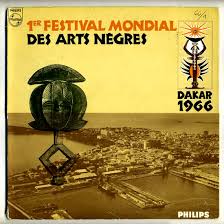A review of information I gathered to write about in 2018 has yielded such a treasure trove of stories about African Americans and the African Diaspora, it is difficult to pick and choose! Below is a list of, and links to, some of these. Where possible, I will supply supply links for further information at BlackPast.org. Take the time to explore these links!
January 2018:
African Americans in Appalachia Fight to be Seen as Part of Coal Country
Why are Black Incarceration Rates Falling
February 2018:
Peggy Cooper Cafritz
The Afrofuturistic Designs of 'Black Panther'
After a Blowup, Kara Walker Lets off Steam in New Orleans
Black Panther Costume Designer Interview
More on Black Panther Costume Information
Another Ruth Carter Interview
Black Panther Afrofuturism
'Black Panther' is one of the Most Important Cultural Moments in American History
Hercules, President George Washington's Chef:
** further information from BlackPast.org
March 2018:
Georgia Gilmore: secretly fed and funded the Civil Rights Movement
Extensive Data Shows Punishing Reach for Black Boys
MOHAI: Al Smith documenting Black Life in Seattle in the 1940s
April 2018:
The Wilmington Massacre
**one of several entries at BlackPast.org
Rhiannon Giddens: another hit
The Peace and Just Memorial: Lynching
Georgetown University and the "lost slaves"
May 2018:
Three Black Teens Finalists in NASA Competition
Barracoon: Zora Neale Hurston's interview with the last living slave ship survivor
An Artist and His Warehouse Full of Dolls
The Philadelphia Doll Museum
August 2018:
A Multi-million Piece Collection of Black Americana
Black Jews are Being Chased out of the Community by Racism
September 2018:
The Man Who Taught Generations of Black Artists gets His Own Retrospective
October 2018:
Lynched for Drinking from a White Man's Well
An Enthralling Show of Afro-Atlantic History Illuminates Brazil
** one of 708 entries in BlackPast.org
14 Black Women Who Threw Themselves into the Sea
November 2018:
Kehinde Wiley, Ferguson, and the Glories of the Renaissance Art Form
Celebrating Black Ballet in Britain
Black Academia in Britain
December 2018:
James Reese Europe, Jazz Pioneer
**for more information from BlackPast.org
Jack Whitten, The Secret Sculptor
How a Businesswoman Became a Voice for Art's Black Models
Black Models of Early Modernism
Radiant and Radical:20 Years of Defining the Soul of Black Art
January 2018:
African Americans in Appalachia Fight to be Seen as Part of Coal Country
Why are Black Incarceration Rates Falling
February 2018:
Peggy Cooper Cafritz
The Afrofuturistic Designs of 'Black Panther'
After a Blowup, Kara Walker Lets off Steam in New Orleans
Black Panther Costume Designer Interview
More on Black Panther Costume Information
Another Ruth Carter Interview
Black Panther Afrofuturism
'Black Panther' is one of the Most Important Cultural Moments in American History
Hercules, President George Washington's Chef:
** further information from BlackPast.org
March 2018:
Georgia Gilmore: secretly fed and funded the Civil Rights Movement
Extensive Data Shows Punishing Reach for Black Boys
MOHAI: Al Smith documenting Black Life in Seattle in the 1940s
April 2018:
The Wilmington Massacre
**one of several entries at BlackPast.org
Rhiannon Giddens: another hit
The Peace and Just Memorial: Lynching
Georgetown University and the "lost slaves"
 |
| Jack Whitten's Kiri Kiri |
May 2018:
Three Black Teens Finalists in NASA Competition
Barracoon: Zora Neale Hurston's interview with the last living slave ship survivor
An Artist and His Warehouse Full of Dolls
The Philadelphia Doll Museum
August 2018:
A Multi-million Piece Collection of Black Americana
Black Jews are Being Chased out of the Community by Racism
September 2018:
The Man Who Taught Generations of Black Artists gets His Own Retrospective
 |
| Denise Murrell bringing art's Black Models to light |
October 2018:
Lynched for Drinking from a White Man's Well
An Enthralling Show of Afro-Atlantic History Illuminates Brazil
** one of 708 entries in BlackPast.org
14 Black Women Who Threw Themselves into the Sea
November 2018:
Kehinde Wiley, Ferguson, and the Glories of the Renaissance Art Form
Celebrating Black Ballet in Britain
Black Academia in Britain
 |
| 20 Years of Defining the Soul of Black Art |
December 2018:
James Reese Europe, Jazz Pioneer
**for more information from BlackPast.org
Jack Whitten, The Secret Sculptor
How a Businesswoman Became a Voice for Art's Black Models
Black Models of Early Modernism
Radiant and Radical:20 Years of Defining the Soul of Black Art


























